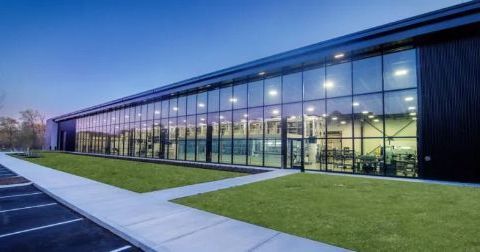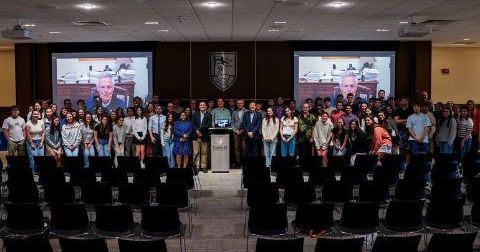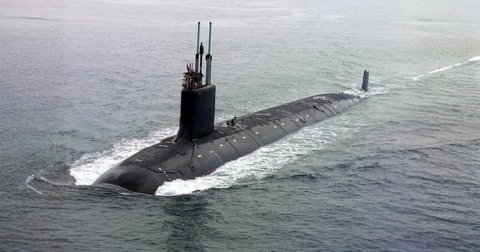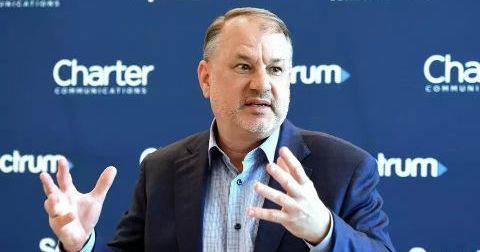TRUMPF Inc Debuts New Smart Factory in Farmington

20 May 2025
News
For decades, Connecticut — and much of the United States — has wrestled with the thorny problem of how to rebuild its once vibrant manufacturing industries in the face of lower-cost competition from markets abroad, particularly in Asia.
President Donald Trump sees tariffs as the way to go.
On Tuesday, German toolmaker TRUMPF will mark the official opening of an approach it believes will help level the competitive playing field and build employment: a new, $40 million “smart factory” on its 60-ace, half million square-foot campus in Farmington, the headquarters of its North American subsidiary since 1969.
TRUMPF builds the machines that its customers use to make their products, everything from farm machinery and construction vehicles to consumer goods like cars, electronics, furniture and refrigerators. TRUMPF, which employs 500 in Farmington, part of a U.S. and global workforce of 19,000, counts big names like Caterpillar, John Deere, General Motors, Sub-Zero and Otis Elevator among its customers and the smaller contractors make parts for them.
The company has been supplying its customers with the machines to build smart factories for years and is now expanding its own use of the technology in Farmington, its fourth such location and the second for U.S. TRUMPF Inc., the North American subsidiary, which registered nearly $1 billion in sales in the 2023-2024 fiscal year.
TRUMPF’s opening Tuesday, which will draw 225 of its customers to Farmington, comes less than a week after the state released its 2025 report on its goals for growing Connecticut’s manufacturing sector. According to the report, the state wants to expand manufacturing to 20% of Connecticut’s gross domestic product — a key indicator of economic health — by 2030, up from the current 10%.
Driving innovation and developing the workforce talent will be key to reaching the goal, the report said.
Smart factories are designed to harness technology that digitally connects different operations that used to be done in separate steps, often manually by workers. Automated systems eliminate downtime, better organize steps in the manufacturing process, and can rapidly shift from one job to the next, particularly crucial for small contractors who adopt the technology.
The smart factory has been evolving for at least two decades, but TRUMPF says the technology has now increased substantially in sophistication. And its potential place in making Connecticut and the U.S. more competitive in manufacturing comes at a significant crossroads for the industry as it grapples with economic uncertainty, supply chain disruptions and a seismic shift in the skills needed in the workforce.
“In manufacturing, we talk a lot about reshoring, right? — bringing manufacturing back to the U.S.,” said Lutz Labisch, president and chief executive of TRUMPFs North American businesses, said, in a recent tour of the smart factory in Farmington. “Back in the day, a lot of these parts would be imported into the U.S. Now, U.S. manufacturers want to do it more locally again.”
But there are hurdles: workforce shortages, high labor costs and safety regulations that must be met.
“In order to do so competitively, you really need to invest in technology,” Labisch said. “We see that technology is necessary for U.S. manufacturers to become competitive. If you do it with the same machine as a Chinese manufacturer would do it back in China, you’ll never be competitive in the U.S. So you really need to invest in a much higher level of automation than your competitors.”
In Connecticut, Labisch said it is still a challenge to find qualified workers for what TRUMPF sees as manufacturing’s future.
“But we are also investing a lot into internal workforce development and decades ago, we started our apprenticeship program, for example, to really educate young people coming into the workforce, specifically for the skills that are needed,” Labisch said.
TRUMPF also is working with other advanced manufacturing companies to form an apprenticeship consortium. TRUMPF also maintains close ties with community colleges and technical high schools to develop a workforce with the right skills, heavily leaning into computer programming.
However, the move to more automation across all industries has raised concerns about the replacement of people by machines.
“The automated systems are designed to either facilitate or eliminate the work these contract manufacturers have trouble finding dependable labor to do,” Catherine Flynn, a TRUMPF spokeswoman, said. “People want these more high-tech positions — these kids that have grown up doing robotics and that, to them, is how to make things, at a more advanced level.”
“While the smart factories drive out the lower-level labor out of the process to reduce the overall cost per part, it creates highly-skilled jobs in production planning, application engineering and programming — these advanced manufacturing jobs that we really see a desire to move into,” Flynn said.
TRUMPF’s 55,000-square-foot smart factory in Farmington — built over the last two years —focuses largely on turning sheet metal into the parts needed to build the machines for its customers. Along a squeaky-clean assembly line — overseen by by programmers who may be in another part of the factory — machines seamlessly cut with lasers, bend and form parts that will later be assembled by workers for customers.
“Let’s say this whole thing is in full operation but you get a very urgent job,” Labisch said. “We have software to deal with that and to kind of reprioritize jobs. In the old days, operators were moving parts manually to the machine, then taking the part and pushing them with carts over the production floor. This is not happening in the smart factory anymore.”
Smart factories also cut down on the amount of materials that are wasted in the manufacturing process because the machines can cut more precisely, also saving money.
“There’s a big sheet of metal that costs you something, so it’s like a guy making pizza pie,” Burke Doar, executive vice president of North American operations, said. “You got to use all the dough. If you don’t, then you’re not able to stay in business as long as your competitor.”
Read the original article here.
More Topics



.png)








